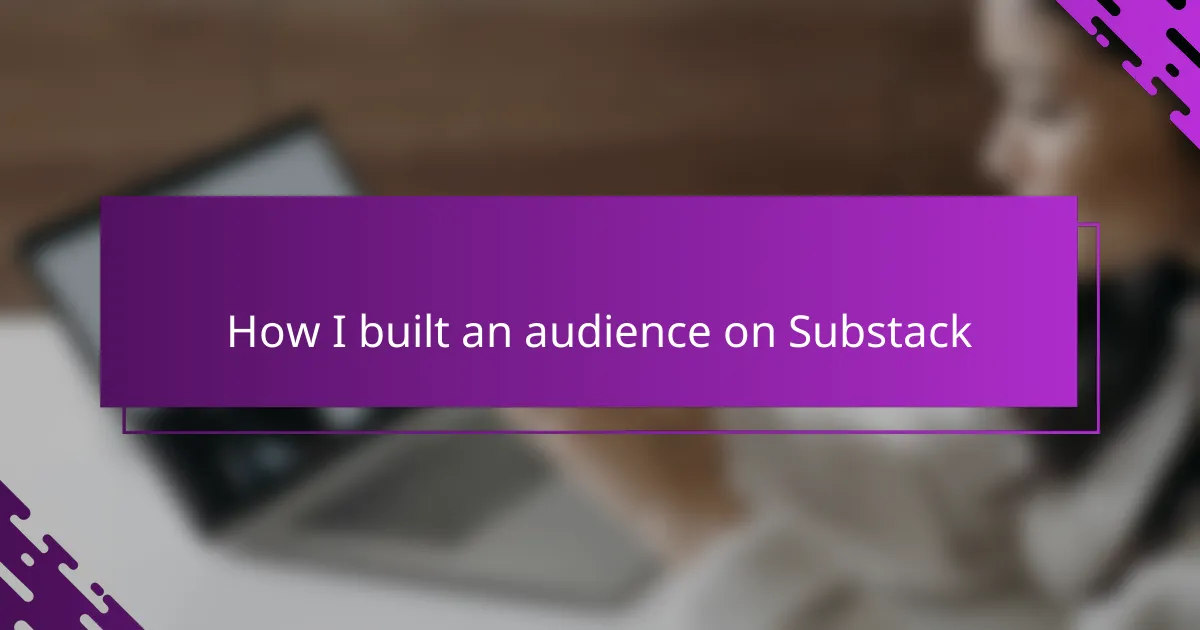Key takeaways
- Authenticity and consistency are vital for personal blogging; regular posting builds reader trust and connection.
- Substack empowers writers by offering control over content and subscriber relationships, making it easy to engage with an audience.
- Building a loyal subscriber base involves nurturing genuine connections and engaging personally with readers.
- Feedback is crucial for improving content; actively seeking reader input fosters a two-way communication that enhances engagement.
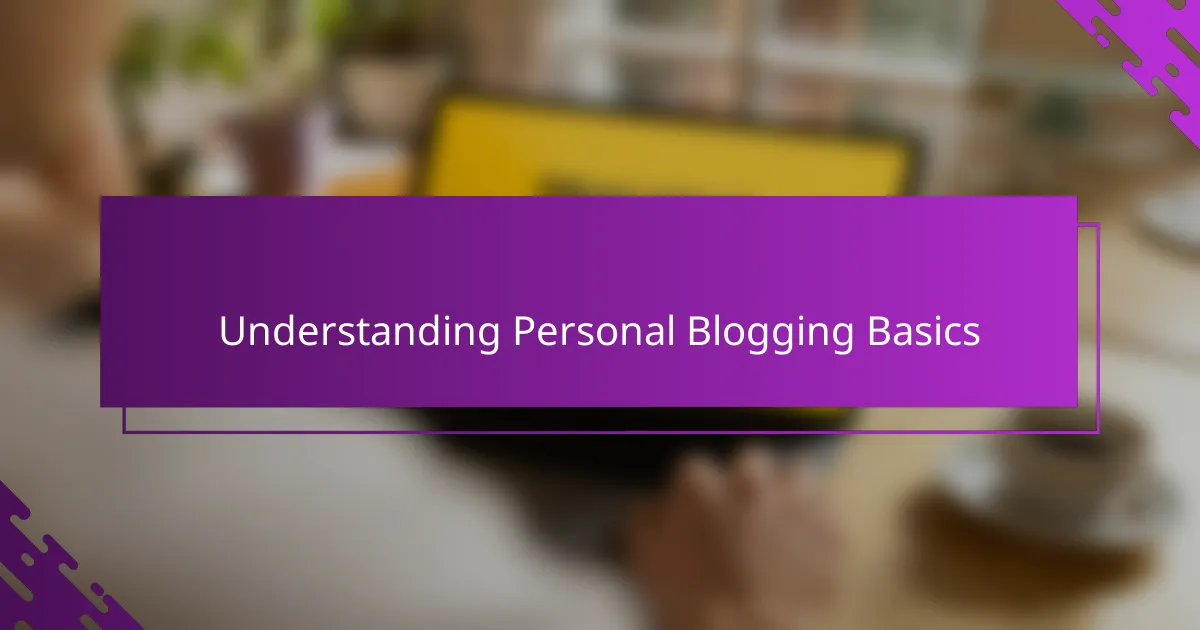
Understanding personal blogging basics
Personal blogging, at its core, is about sharing your unique voice and experiences. I remember when I first started, thinking, “Who would want to read what I have to say?” But then I realized it’s not about fitting a mold; it’s about authenticity. When you write from the heart, people naturally connect.
One crucial aspect I’ve learned is consistency. It’s tempting to post sporadically, but building an audience means showing up regularly. I found that even when I felt uninspired, sticking to a schedule helped me grow my readers because they knew when to expect new content.
Have you ever thought about what makes your story worth telling? For me, it was embracing imperfection and being honest about my journey. Personal blogging isn’t about perfection—it’s about the genuine human experience behind every post. That perspective changed the way I approached my writing entirely.
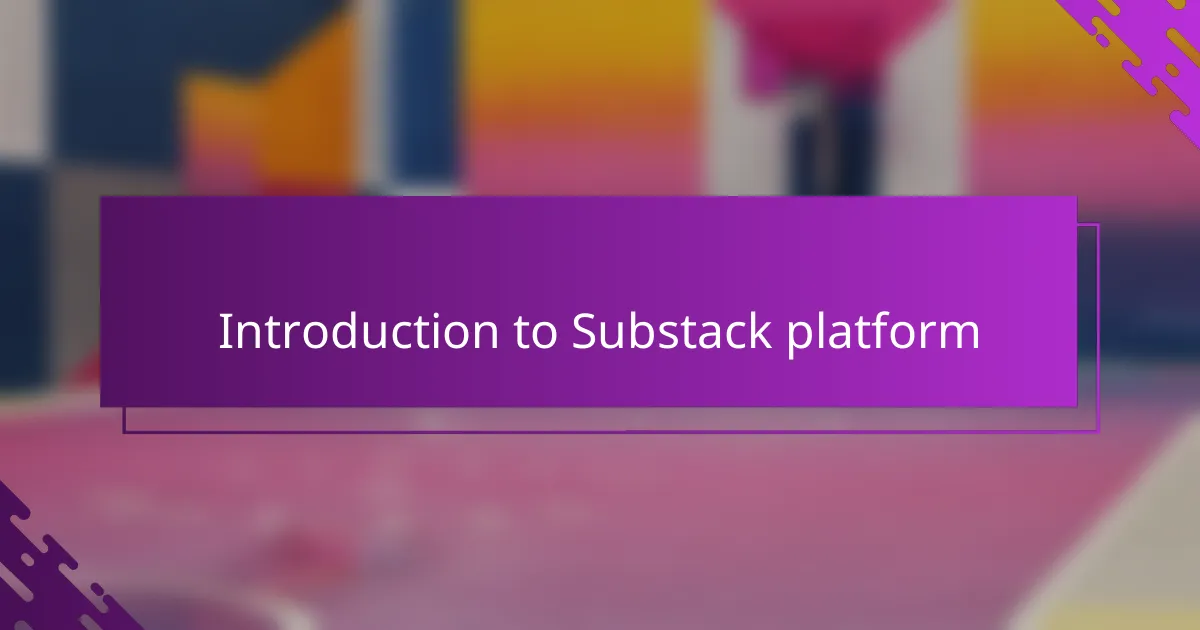
Introduction to Substack platform
The first time I discovered Substack, I saw it as more than just a newsletter tool—it felt like a community builder tailored for writers who want to own their audience. Have you ever struggled with platforms that limit your control or bury your content? That’s where Substack shines by giving you a simple, direct way to reach readers through email, without distractions.
What struck me most about Substack is how it blends ease and power. Setting up my newsletter was surprisingly quick, yet I retained full creative freedom. I could write, share, and even monetize my work all in one place, which felt both empowering and a little daunting at first.
If you’re wondering how to turn casual readers into loyal followers, Substack’s model makes it doable by focusing on subscription-based relationships. For me, that meant creating content people not only enjoyed but were willing to invest in—a game-changer for building a deeper connection with my audience.
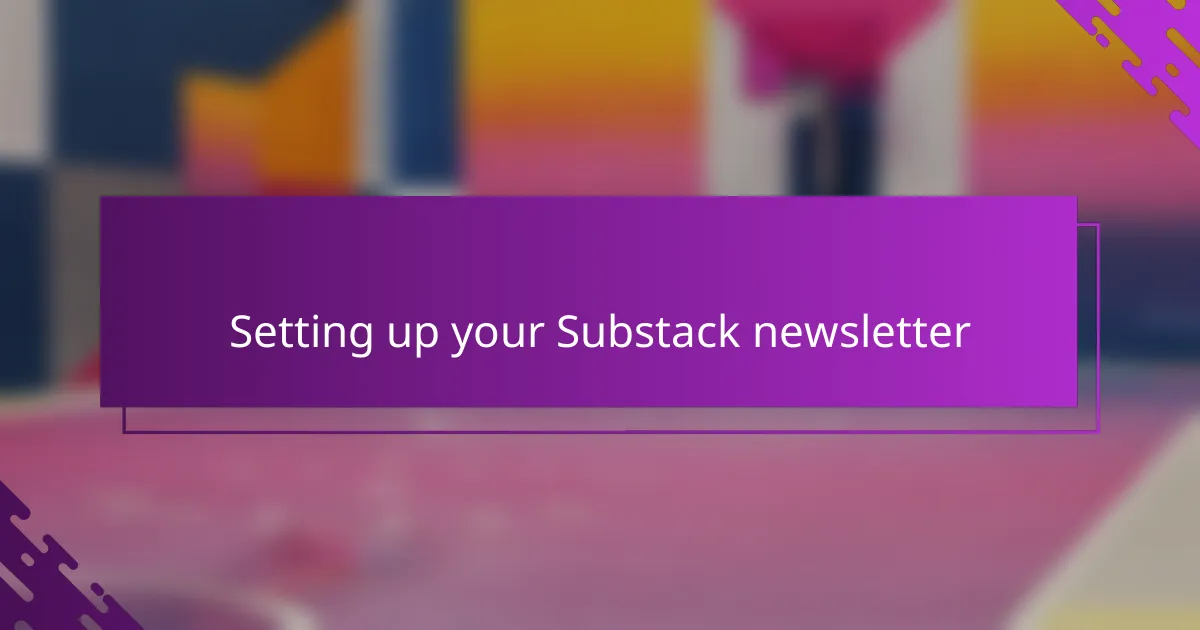
Setting up your Substack newsletter
When I first set up my Substack newsletter, I was surprised by how straightforward the process was. Have you ever felt overwhelmed by complicated website setups? With Substack, I just had to choose a name, write a short description, and customize a few design elements—nothing technical or intimidating. That simplicity made me feel confident right from the start.
Next came the important step of deciding on my newsletter’s tone and posting frequency. I asked myself, “What kind of relationship do I want to build with my readers?” For me, establishing a weekly schedule felt manageable and kept my voice consistent, which helped readers know when to expect fresh content. Setting these parameters early created a rhythm I could stick to without pressure.
One detail I paid close attention to was the welcome email that goes out to new subscribers. It’s your first impression in their inbox, so I crafted a message that was warm and genuine, sharing a bit of my story and what they could expect. That small personal touch made a big difference—I started getting responses and real connections almost immediately. Have you thought about how your welcome message reflects your unique voice?
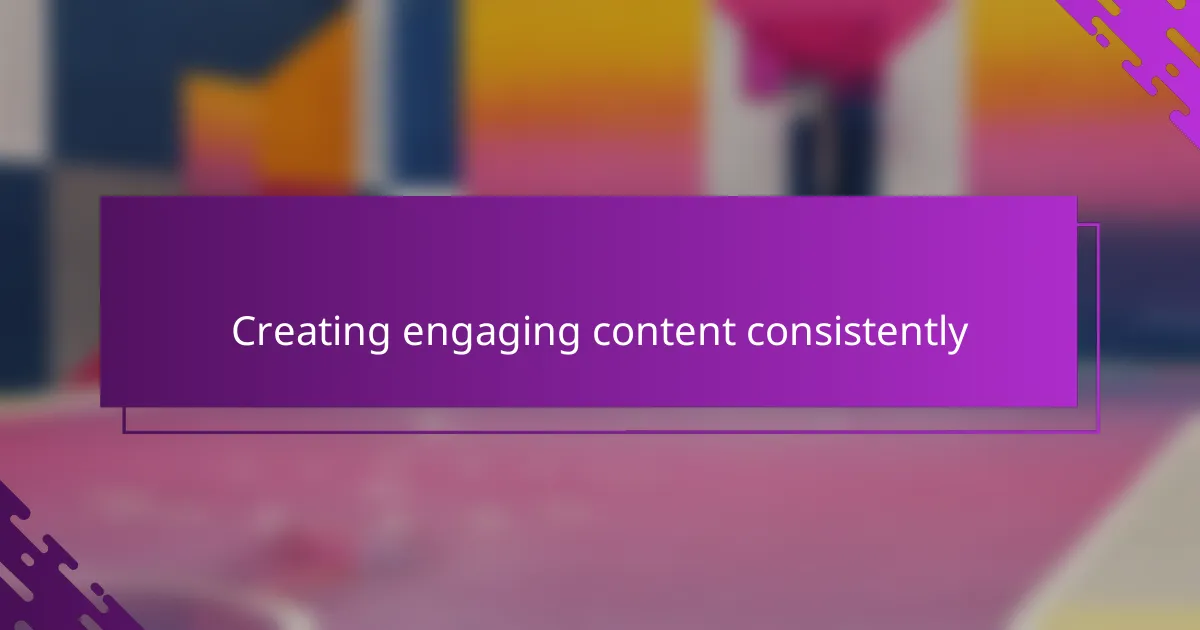
Creating engaging content consistently
Consistency in content creation became my secret weapon. There were days when inspiration felt miles away, but I learned to show up anyway—because authenticity shines through even when ideas aren’t perfect. How often have you surprised yourself by writing something meaningful on a “low-energy” day?
What keeps readers coming back is not just frequency but genuinely engaging material. I asked myself: What do I want my audience to feel or learn with each post? By focusing on storytelling and sharing insights that mattered to me, I found that my writing resonated far deeper than I expected.
I also mixed things up to keep my content fresh—sometimes a personal anecdote, other times a practical tip or a challenge I faced. This variety made the experience feel dynamic, both for me and my readers. Have you ever experimented with different formats to see what clicks? For me, that curiosity turned consistency into something enjoyable rather than a chore.
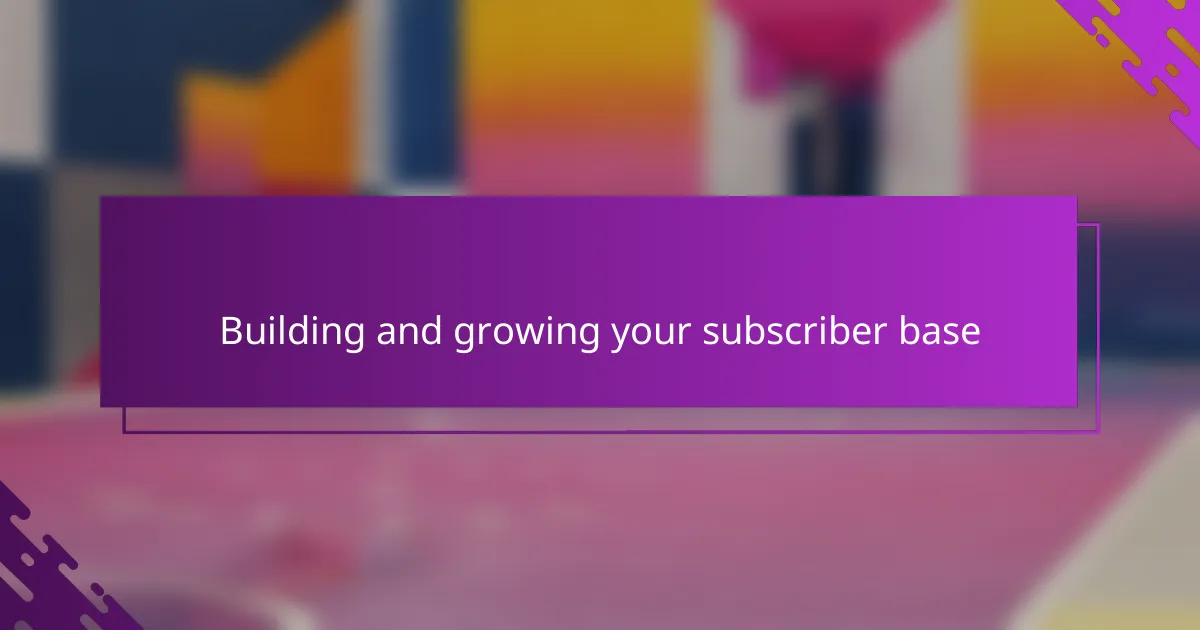
Building and growing your subscriber base
Growing your subscriber base on Substack was, for me, less about chasing big numbers and more about nurturing genuine connections. I often asked myself, “Who exactly am I writing for?” When I focused on serving that small but engaged group with content they cared about, my audience naturally started to expand. It’s like planting seeds—you water the ones that sprout instead of scattering everywhere.
I found that engaging with readers personally made a huge difference. Responding to their comments and emails wasn’t just polite; it became the foundation for a community that felt alive and welcoming. Have you noticed how a simple reply can turn a one-time reader into a loyal subscriber? Those small gestures built trust and encouraged people to stick around and tell their friends.
Another strategy I leaned into was leveraging my existing networks without feeling spammy. Sharing my newsletter with friends, social media followers, or relevant online groups meant the first subscribers were people who already believed in my voice. It made that critical early growth feel more manageable and authentic. Have you tried starting where you already have support before reaching out to strangers? For me, that initial boost was the spark that kept the momentum going.
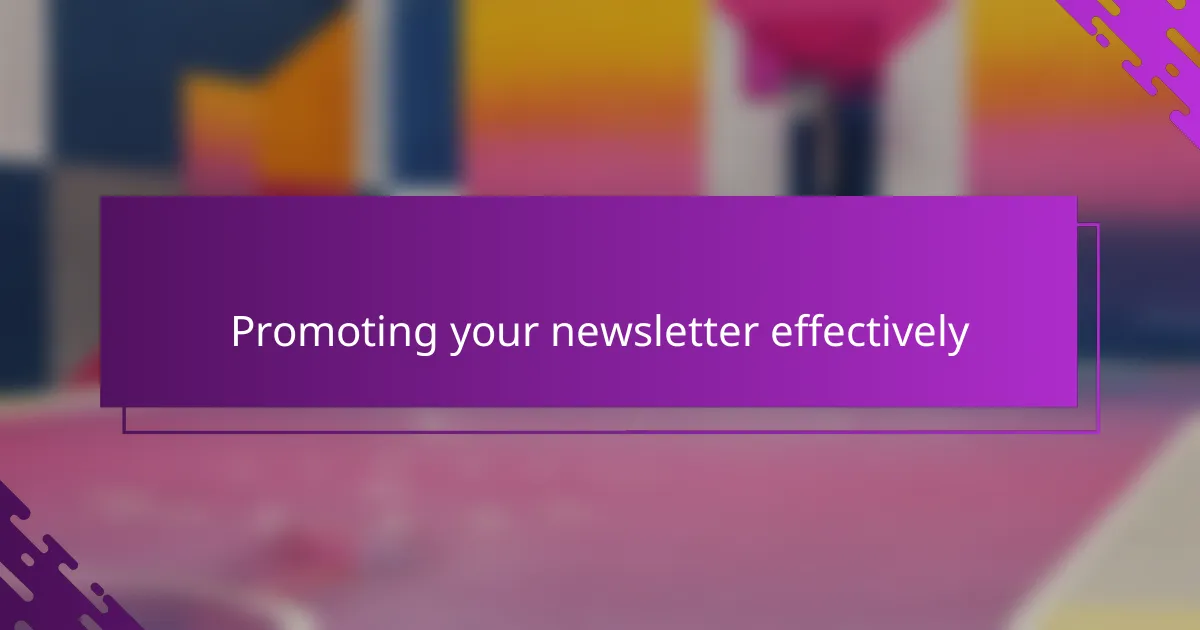
Promoting your newsletter effectively
Promoting your newsletter effectively means more than just sharing a link everywhere. Early on, I realized that thoughtful promotion—like tailoring messages to specific groups or platforms—made a big difference in attracting readers who genuinely cared about my content. Have you ever noticed how a well-placed recommendation can feel more personal than a generic shout-out? That’s the kind of targeted effort that pays off.
I found collaborations immensely helpful too. Reaching out to fellow writers for cross-promotions or guest posts wasn’t just a growth hack; it became a way to connect with like-minded creators. Those partnerships brought fresh eyes to my newsletter and added real value for my subscribers. Have you considered how mutual support within a community can amplify your reach organically?
Lastly, I learned the power of giving away value upfront. Whether that was through free resources, exclusive insights, or simply sharing my story authentically, offering something meaningful encouraged people to subscribe. It’s a subtle invitation rather than a hard sell. What could you share today that would make someone want to hit that subscribe button? For me, focusing on generosity first truly changed the promotion game.
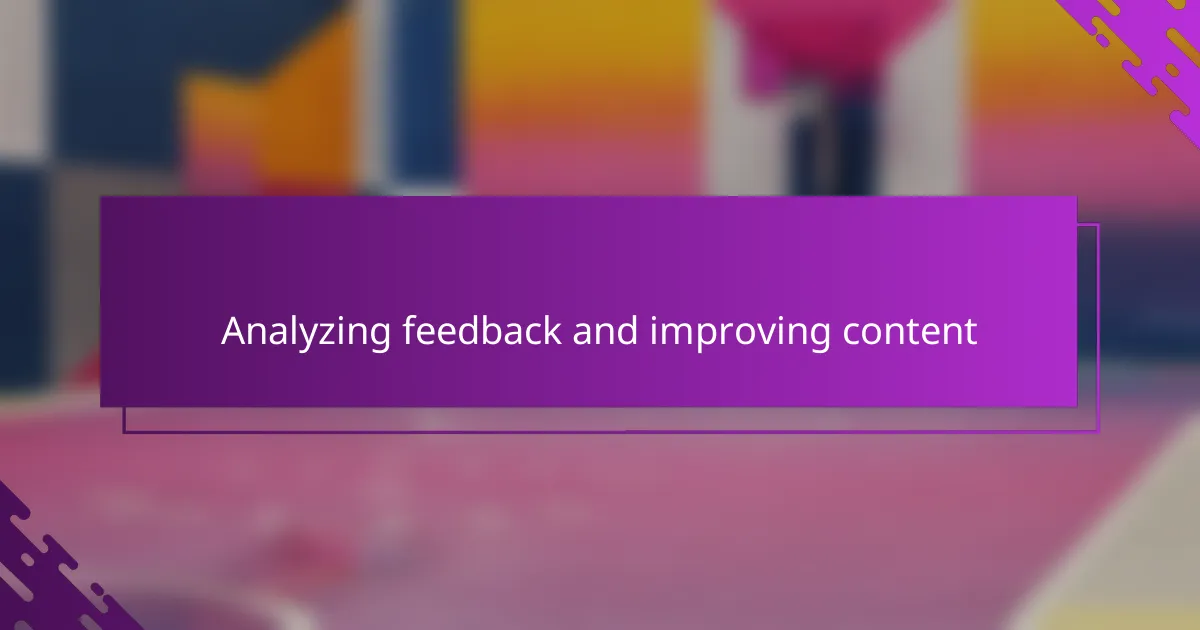
Analyzing feedback and improving content
One thing I quickly learned is that feedback isn’t just a pat on the back or a critique—it’s a direct line to understanding what truly resonates with your audience. After a few posts, I started paying close attention to reader comments and open rates, asking myself, “What did they like here? What felt off?” That reflection helped me fine-tune my voice and topics in ways that felt authentic but also more aligned with what my readers wanted.
Sometimes the feedback was subtle—like a drop in engagement or a lack of replies—that told me it was time to rethink my approach. Have you ever felt unsure whether to pivot or stay the course? I found that combining data with my gut feeling gave me the confidence to experiment, knowing I wasn’t just guessing. For example, after noticing fewer clicks on longer essays, I tried shorter, punchier posts and saw a noticeable boost in reader interaction.
Acting on feedback became a kind of dialogue between me and my audience. I started asking questions directly in my newsletters—“What topics would you like me to explore next?”—and the responses not only sparked new ideas but also deepened the connection. That two-way communication transformed my blogging from a solo effort into a shared journey, which is the kind of engagement every personal blogger hopes to find.
